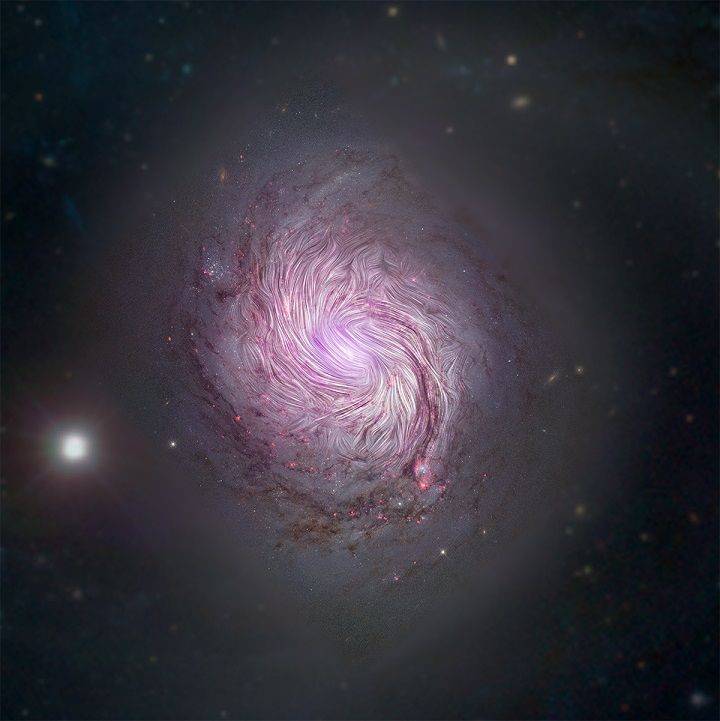NASA Uncovers Invisible Features That Shape Spiral Galaxies

KEY POINTS
- Scientists unveil the invisible magnetic fields of spiral galaxies
- The magnetic fields flow through the arms of spiral galaxies
- Gravity and magnetic fields can form the shape of spiral galaxies
Scientists from NASA were able to discover the forces involved in shaping spiral galaxies. They were able to do so by detecting an invisible feature of these massive cosmic structures.
Spiral galaxies are the most prominent type mainly due to their distinct shape. This type of galaxies, such as Milky Way, is characterized by its long spindly arms that radiate from its galactic centers.
Despite being the most common type of galaxy, little is still known regarding the process that molded the shape of spiral galaxies. Recently, a team of scientists was able to discover the forces involved in creating the structure of spiral galaxies.
The scientists were able to carry out their breakthrough study by observing a spiral galaxy known as NGC 1068, which is located in the Cetus constellation about 47 million light-years away. Like Milky Way, NGC 1068 has a very unique spiral-shaped structure.
Through NASA’s Stratospheric Observatory for Infrared Astronomy (SOFIA), scientists were able to view the galaxy’s magnetic fields, which are invisible to human eyes. But through SOFIA’s infrared imaging capabilities, the scientists were able to observe how the magnetic fields flow through the spiral arms of the galaxy.
“Magnetic fields are invisible, but they may influence the evolution of a galaxy,” Enrique Lopez-Rodriguez, of the SOFIA Science Center, said in a statement. “We have a pretty good understanding of how gravity affects galactic structures, but we’re just starting to learn the role magnetic fields play.”
According to the scientist, the effect of the magnetic fields on a spiral galaxy’s arms supports the density wave theory. This concept states that the gas, stars and other cosmic materials within a galaxy’s arms are not fixed in place. Instead, they can be moved by gravitational forces.
By seeing the magnetic fields, the scientists believe that the same gravitational forces that shaped the galaxy’s arms are also affecting its magnetic field.
“This is the first time we’ve seen magnetic fields aligned at such large scales with current star birth in the spiral arms,” Lopez-Rodriguez explained. “It’s always exciting to have observational evidence that supports theories.”
© Copyright IBTimes 2024. All rights reserved.




















